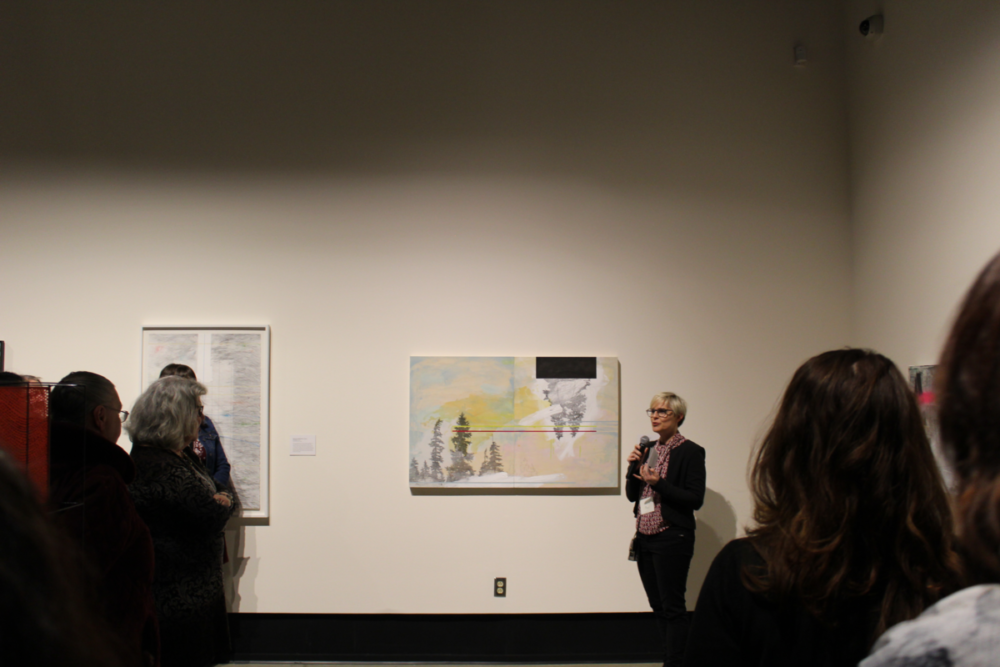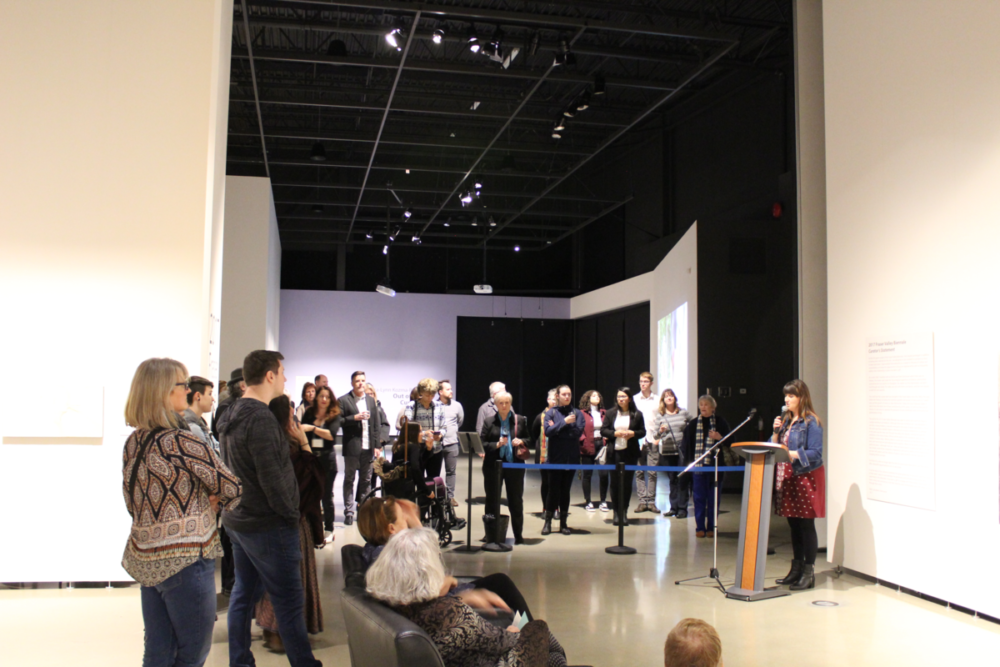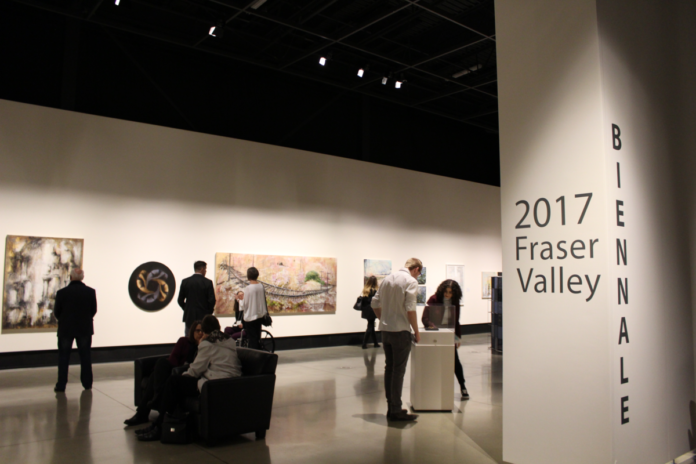The Fraser Valley Biennale serves to represent the extraordinary artwork produced by artists in the Fraser Valley region in the period of the past two years. The Biennale has been a recurring event every two years since 2011, and has connected the art being produced in our local community to the broader contemporary art community in Canada. The 2017 Biennale included over 20 artists from around the region, and has been shown all year, across the valley. The series of exhibitions began in January with the Abbotsford Arts Council at the Kariton Art Gallery, then in Chilliwack with the Chilliwack Visual Artists Association, then in Mission with the Mission Arts Council, then finally at the Reach Gallery Museum in Abbotsford.
On Thursday, Nov. 16, the Reach Gallery Museum invited the public to meet the talented artists involved in this year’s Fraser Valley Biennale. The purpose of the event was to give an insider’s look at the massive amount of talent present in the Fraser Valley region. Executive director and curator at the Reach, Laura Schneider, presented the event, and spoke about the importance of getting to know the artist’s work through their own perception of it.
Five artists present at the event had previously volunteered to stand in front of their work, and speak about their practice and the concept behind it. The list included Marguerite MacIntosh, Sylvie Roussel-Janssens, Amy J. Dyck, Pierre Tremblay, and UFV’s own BFA program advisor, Paula Funk.

MacIntosh presented her piece “Threshold 1.” The artist has a background in architectural design, and presented a piece that started as one of her architectural layouts. Organic free-form lines occupy what would have been the negative space in the painting. MacIntosh stated that these lines represent the unpredictability of life, and the journeys and trips made by people around the structure.
MacIntosh was followed by Roussel-Janssens, who gave an explanation behind her installation, “Lac Ste-Marie,” a piece built out of wire and re-purposed cloth cutouts, which depict the image of a lake from Quebec on one half, and a treeline from the west coast presented on the other. Roussel-Janssens’ work has traditionally been about environmentalism, however, she has recently begun to incorporate some of her personal life into it. Having grown up in Quebec and moved to B.C., she has chosen to represent both provinces within this particular piece.
“Embracing the Maelstrom,” an oil painting featuring four symmetrical figures on a circular panel by Amy J. Dyck, was the next work to be presented. Dyck stated that the circular structure is used as a metaphor for the self in many cultures. This design choice, in tandem with her themes of gesture and posture, convey her sense of fascination with the human form. She also states that the lighter figures represent what is known, and the dark figures represent what is unknown.

Next up was Paula Funk, who is also a recognized local artist and a graduate of the BFA program at UFV. Her piece, “Woods,” a mixed media piece on wood panel, is about the transition from being a primary caregiving parent, to the parent of adult children. Two sets of trees are present in the painting, which are taken from photos from a family trip of Funk’s. Her work speaks about binary relationships between individuals or things. These are represented in the various recurring motifs in her work, including geometric lines versus organic lines, and black and white elements versus colour.
“What’s He Building in There?” is an oil portrait on canvas, presented by Pierre Tremblay. Tremblay stated that his work always starts with a photograph, but as he is very against the idea of painting photo-realistically, he will only sometimes look at the photo for accuracy or reference. Most of the time, he will put it out of his mind entirely, as he wants the painting to become its own piece, and stand apart from the original.
After the various presentations, attendees were encouraged to speak with the artists and ask them questions to get to know both their personal lives and work better.
The next biennale will take place in 2019, with call for submissions likely being sent out in late Sept., or early Dec. of 2018. Aspiring artists from all corners of the Fraser Valley are encouraged to submit work, as all forms of art are accepted. The current body of work will remain on display at the Reach Gallery Museum until Dec. 31, and an anthology composed of the pieces shown this year at all four venues is available at front desk for $5.00.


